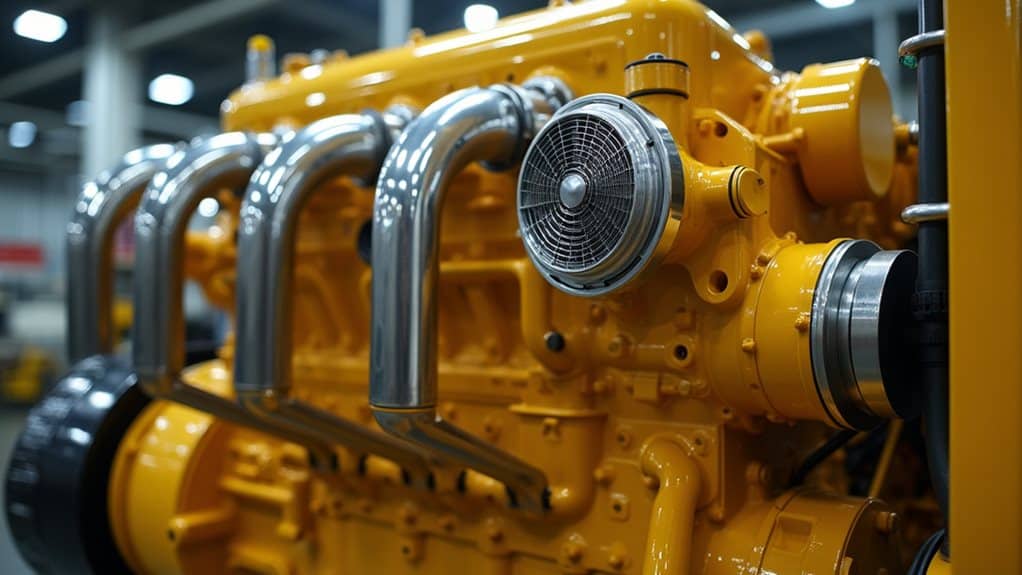You’ll find the Cat 3406B delivers horsepower ratings between 310 and 485 HP in standard trucking configurations, with torque output ranging from 1,250 to 1,850 lb-ft depending on your specific engine setup and application requirements. This 14.6-liter inline-six diesel engine uses mechanical fuel injection to provide predictable power curves, while specialized high-performance variants can exceed 600 HP. The engine’s performance specifications vary based on serial numbers and intended applications, with extensive details awaiting your exploration below.
Quick Tips
- The Cat 3406B produces 310-485 HP in standard trucking configurations, with specialized setups exceeding 600 HP.
- Torque output ranges from 1,250 to 1,850 lb-ft, providing excellent heavy-duty towing and hauling capabilities.
- Marine applications typically generate 325-540 HP, while industrial variants produce 325-500 HP depending on configuration.
- The mechanical fuel injection system delivers predictable torque curves, enhancing load control and operational reliability.
- Power specifications vary by serial number and engine setup, with higher ratings designed for demanding applications.
Engine Specifications and Core Configuration Details
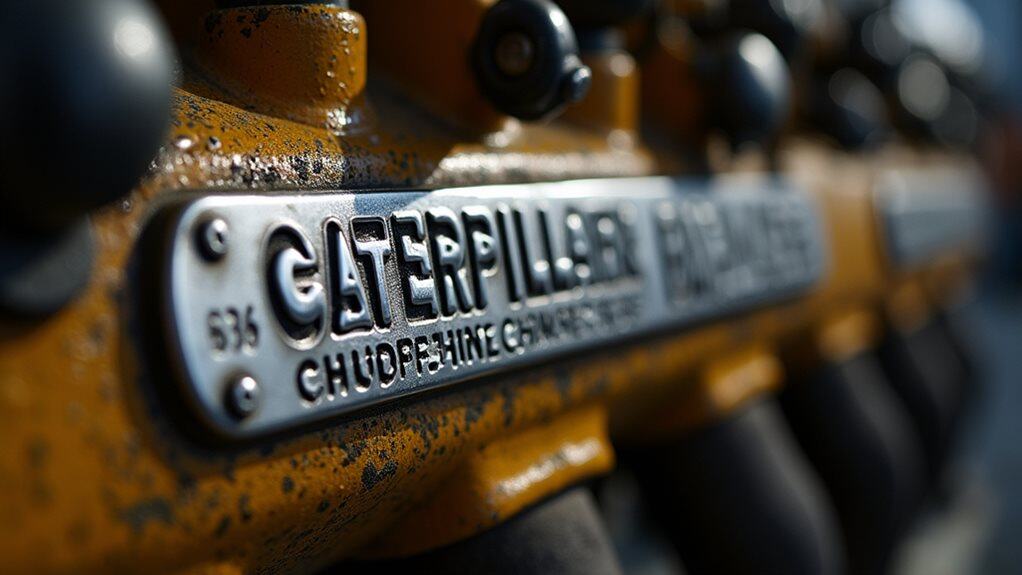
The Cat 3406B stands as a mechanical marvel in diesel engine design, built around a sturdy 6-cylinder inline configuration that delivers reliable power without electronic complexity. You’ll find 14.6 liters of displacement spread across cylinders measuring 5.4 inches bore by 6.5 inches stroke. This heavy-duty iron block construction guarantees durability while maintaining a 14.5:1 compression ratio for peak performance. The engine features a wet sleeve design that simplifies rebuilds by eliminating the need for block machining during overhauls. Additionally, proper disposal practices for hazardous materials like acetone can prevent environmental contamination, underlining the importance of responsible maintenance in heavy machinery.
Horsepower Output Ranges Across Different Applications
Building on this sturdy mechanical foundation, Cat 3406B engines deliver varying horsepower outputs depending on their intended application, with power ranges spanning from around 310 HP in basic trucking configurations to over 600 HP in specialized high-performance setups.
You’ll find marine applications typically produce 325-540 HP, while industrial variants range from 325-500 HP, demonstrating exceptional adaptability. The fully mechanical design of these engines contributes to their lasting popularity among operators who value reliability and straightforward maintenance procedures. Moreover, the weight of fully dressed engines can significantly influence performance and installation considerations in various applications.
Torque Performance Characteristics and Variations
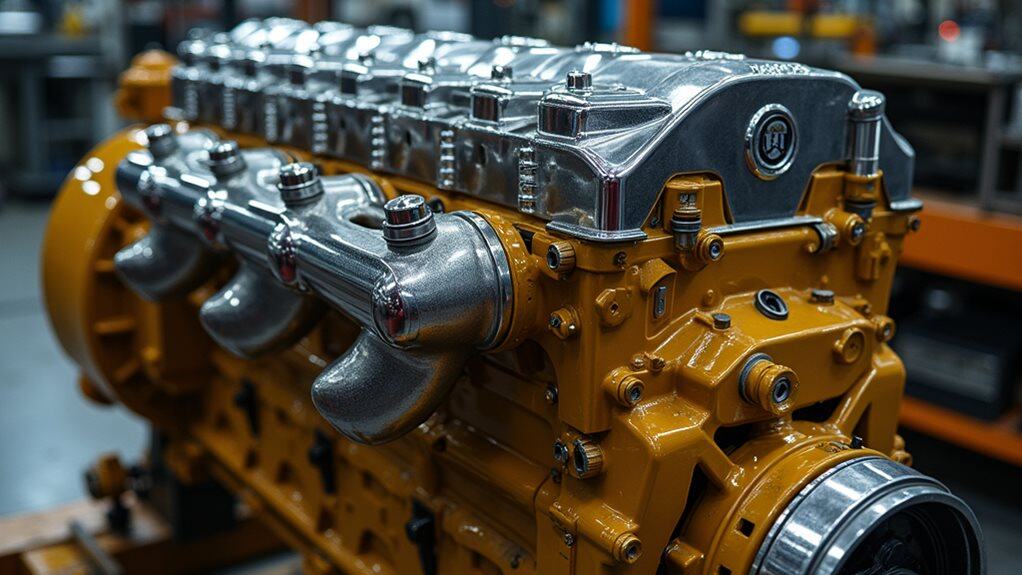
While horsepower gets most of the attention, torque serves as the real workhorse in Cat 3406B engines, providing the twisting force that moves heavy loads and powers through demanding applications.
You’ll find torque output ranging from 1,250 to 1,850 lb-ft, depending on your specific configuration.
The mechanical fuel injection system delivers predictable, linear torque curves that enhance load control and reliability. Additionally, maintaining the engine’s starter motor function is crucial to prevent mechanical failures that could affect overall performance.
Mechanical Fuel Injection System Impact on Power Delivery
Unlike modern electronic fuel systems that rely on computer controls and sensors, Cat 3406B engines employ a purely mechanical direct fuel injection system that fundamentally shapes how power reaches the wheels.
You’ll find this mechanical approach delivers more linear, predictable power output through fixed injection timing. The gear-driven camshaft synchronizes fuel delivery precisely, creating consistent torque curves ideal for heavy-duty applications. Additionally, maintaining proper oil pressure is crucial for ensuring optimal engine performance and longevity.
Durability Features That Support High Performance Output

Because the Cat 3406B was engineered for demanding commercial applications, its durability features work together to maintain consistent horsepower and torque output throughout extended service life.
You’ll find heavy-duty iron block construction resists cracking under stress, while wet sleeve cylinder liners simplify rebuilds. The gear-driven camshaft guarantees precise valve timing, and sturdy cooling systems prevent performance-degrading overheating during operation.
Maintenance Requirements for Optimal Power and Torque
To maintain your Cat 3406B’s impressive horsepower and torque output, you’ll need to follow a strict maintenance schedule that focuses on two critical areas.
Regular oil changes using Caterpillar-specified lubricants protect internal engine components from wear while ensuring proper lubrication under high-stress conditions.
Additionally, periodic valve lash adjustments keep your engine’s intake and exhaust valves operating at precise clearances, which directly impacts combustion efficiency and power delivery.
Regular Oil Changes
Every 10,000 miles or 500 engine hours, your Cat 3406B engine demands fresh oil to maintain its impressive horsepower and torque capabilities.
You’ll need approximately 40 quarts during each change, and don’t forget the filter replacement.
Fresh oil prevents sludge buildup, reduces friction, and protects critical components like injectors and turbochargers that sustain peak power output.
Valve Lash Adjustments
When your Cat 3406B engine starts losing its edge in power delivery, improper valve lash often stands as the culprit behind diminished horsepower and torque output.
Incorrect clearances cause compression loss and inefficient combustion timing.
You’ll need to adjust lash every 50,000 miles, ensuring proper valve timing for peak performance at 1800 RPM operating ranges.
Performance Tuning Potential and Limitations
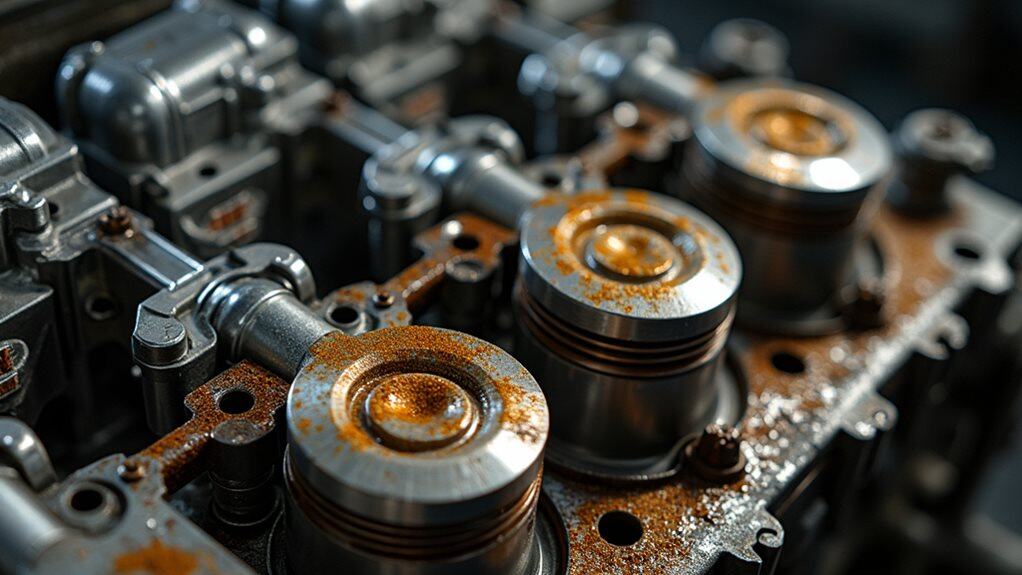
When you’re considering performance modifications for your Cat 3406B, you’ll quickly uncover that the mechanical injection system creates both opportunities and significant constraints compared to modern electronic engines.
Your tuning options are primarily limited to mechanical governor adjustments, fuel system recalibration, and turbocharger upgrades, since these engines lack the sophisticated electronic controls found in newer models.
While aftermarket solutions can help you squeeze additional horsepower from the sturdy 3406B platform, you must work within the boundaries of mechanical fuel delivery systems that weren’t designed for the precision tuning capabilities available today.
Mechanical Injection System Limits
Although the Cat 3406B’s mechanical injection system delivers impressive reliability and durability, it operates within specific performance boundaries that both enable and restrict tuning potential.
You’ll find maximum fueling limited by physical injector capacity, while mechanical governors offer restricted adjustment ranges compared to electronic systems.
Over-fueling risks incomplete combustion, excessive cylinder pressures, and potential engine damage without real-time feedback sensors.
Aftermarket Tuning Options
These mechanical system constraints don’t prevent you from extracting considerably more power from your Cat 3406B engine through aftermarket tuning methods.
You can increase horsepower by loosening Allen wrench screws behind the engine plate, gaining approximately 20 HP per turn.
Careful adjustments can enhance power from stock 350-425 HP to nearly 500 HP safely.
Electronic Control Constraints
While the mechanical 3406B engine allows for straightforward tuning adjustments, the electronic PEEC (Programmable Electronic Engine Control) variant introduces a different set of challenges and opportunities for performance modifications.
You’ll find that the ECM restricts fuel delivery and timing within preset parameters, preventing engine damage but limiting horsepower gains without specialized reprogramming tools and custom calibration software.
Serial Number Identification for Performance Specifications
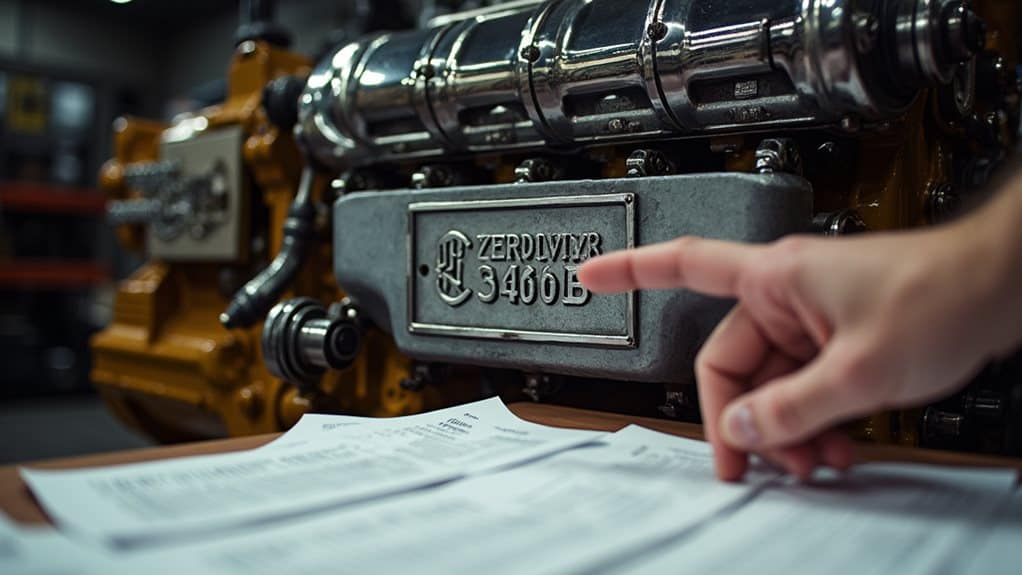
Understanding your Cat 3406B engine’s performance capabilities starts with properly identifying its serial number, which serves as the key to revealing accurate horsepower and torque specifications.
You’ll find this alphanumeric code combines letters and numbers indicating factory location, production year, and build sequence.
Different serial numbers correspond to specific power outputs ranging from 310 to 485 horsepower.
Wrapping Up
You’ll find the CAT 3406B delivers impressive power specs ranging from 350 to 425 horsepower with torque outputs between 1,350 and 1,650 lb-ft, depending on your specific application. The mechanical fuel injection system provides reliable power delivery while maintaining excellent durability. You can optimize performance through proper maintenance intervals and understanding your engine’s serial number specifications. Remember that tuning potential exists, but you’ll need to respect the engine’s design limitations for long-term reliability.

